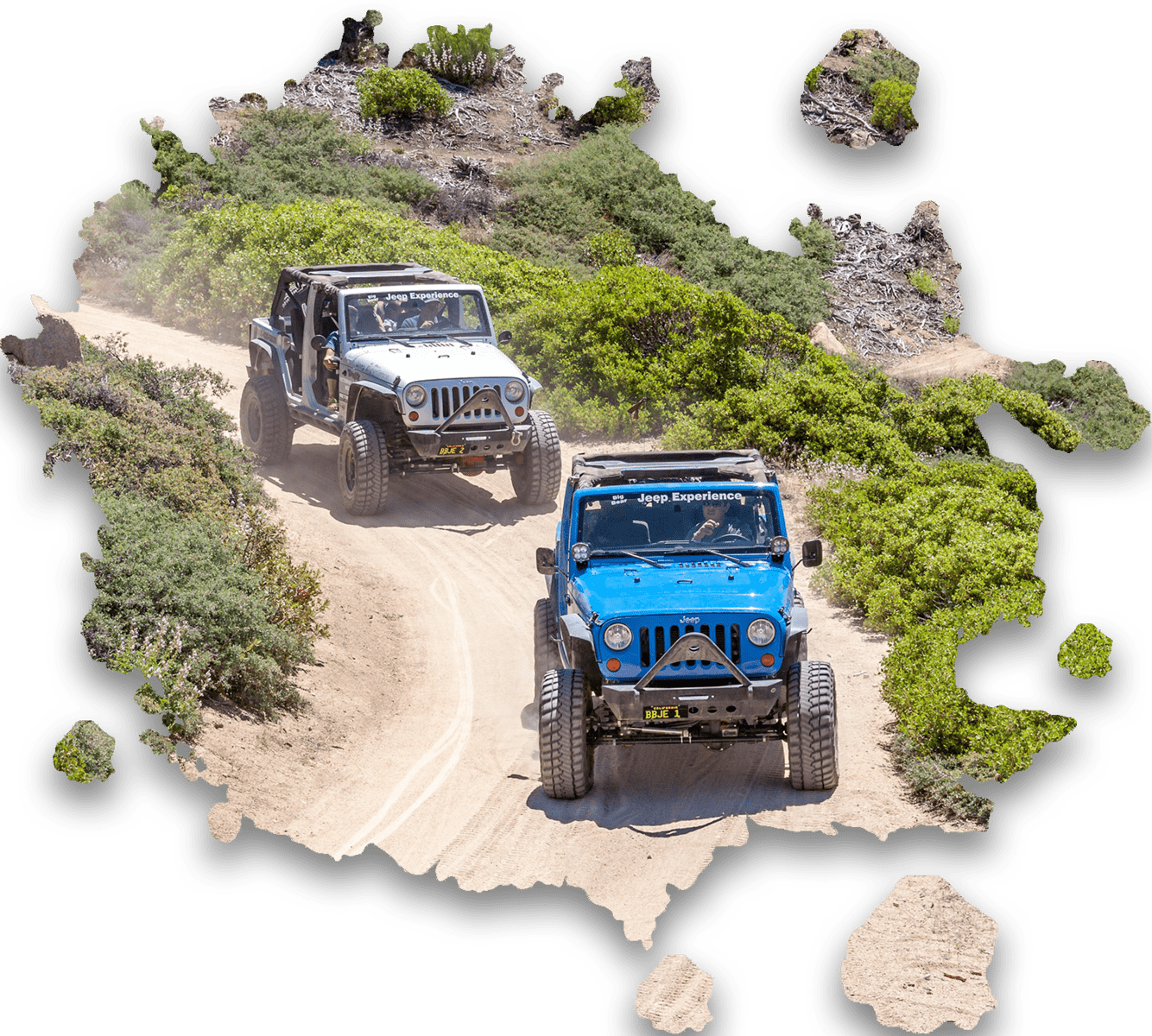
Whether you’re a van dweller, weekend camper, or overlanding adventurer—staying cool while camping on a hot summer night can be tricky! There’s nothing worse than waking up in a puddle of sweat and not being able to fall back asleep after.
As a camping lover and full-time traveler, I have found some great tips and tricks for staying cool and comfortable during even the hottest months of the summer.
So here are my top 13 summer camping tips to help you beat the heat and stay cool on your next camping adventure!
How To Stay Cool on a Summer Camping Trip
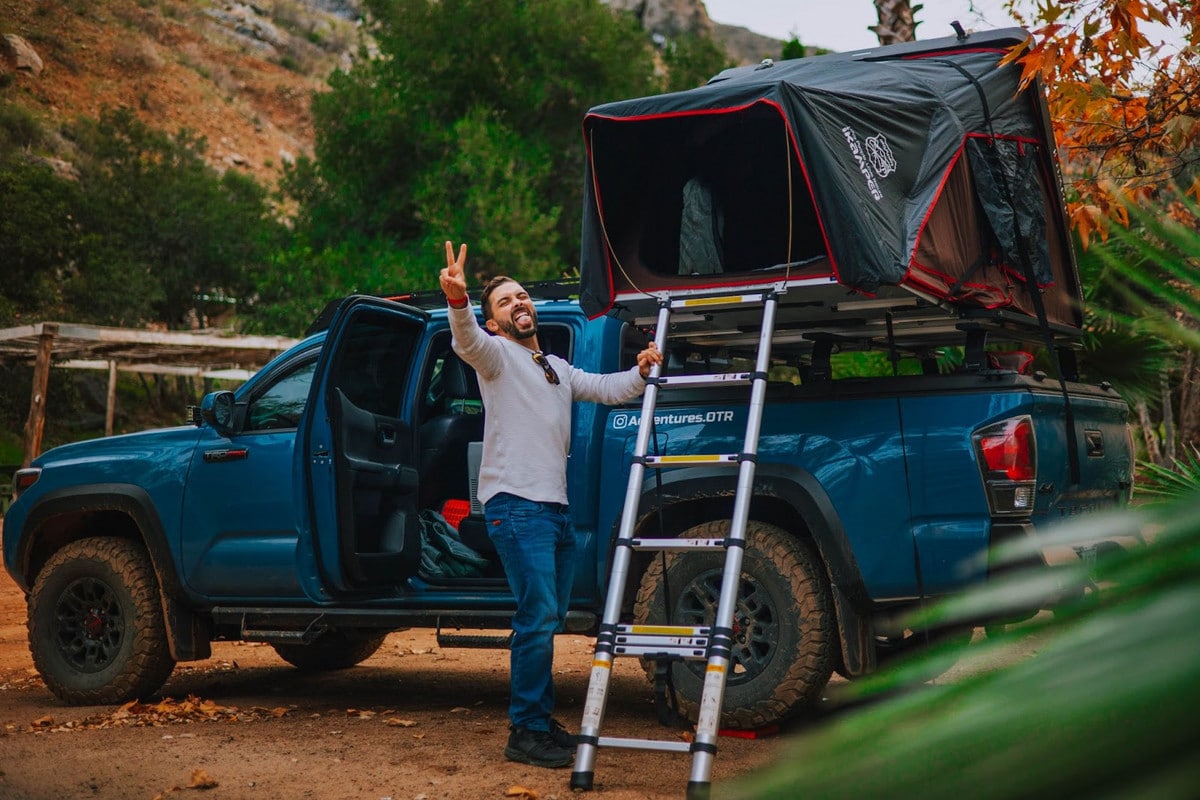
Follow these tips and stay cool all summer long—no matter the temperature
1. Utilize The Shade
The sun can be absolutely brutal. Not only is it hot in direct sunshine, but it can also quickly and easily burn you if you stay in it too long. A sunburn is incredibly uncomfortable and actually can raise your body heat and cause a fever if it is bad enough.
Always be sure to use a high spf sunscreen while in direct sunlight, and better yet—set up your camp in an area that will have shade during the hottest point of the day. This will trap as much cool air inside your tent as possible which will help you have a better night’s rest.
Remember that the sun rises in the east and sets in the west, so if you set up camp on the east side of a hill, mountain, or big tree, your camp will cool down much faster before bed.
2. Maximize The Natural Breeze
Wind is like nature’s air conditioner, and using the breeze to your advantage is a great way to stay cool on hot summer days—especially if you don’t have electricity or air conditioner.
The best way to do this is to ensure that your tent opens up toward the breeze. Be sure to open other windows to help with air circulation as well. This will help the cooling breeze to come in and the trapped heat to escape.
Better yet, if the weather forecast allows for it, you can remove your rain fly entirely. This will ensure your tent can stay cooler because you will get 360 degree air flow.
3. Get Off The Ground
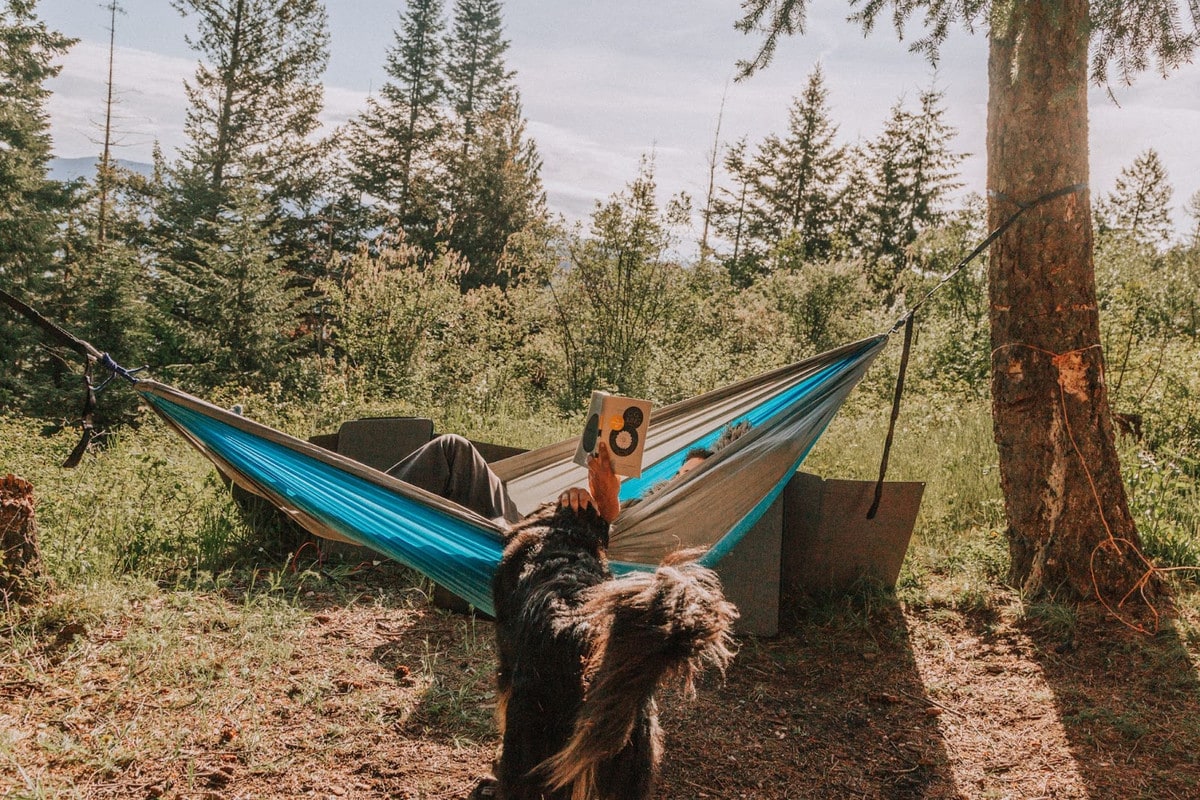
One great (and super fun) way to stay cool during the summer is to sleep in a hammock! Sleeping in a hammock allows for airflow all around and minimizes areas that hot air can get trapped.
There are a few tips you can follow to ensure you stay comfortable while hammock camping. First, it is highly recommended that you use a mosquito net. There are plenty on the market that are super easy to set up, like this Eno Hammock Bug Net. Summer time is prime time for mosquitos and ticks, and hammocks can leave you fairly exposed and vulnerable to bites.
Next, make sure to set your hammock up properly. The most comfortable way to set up your hammock is to ensure you maintain a 30 degree angle between your hammock strap and the ground while you’re laying down. Also try to keep about 18 inches off the ground.
4. Take a Cold Shower Before Bed (Or Jump in a Lake)

The toughest part of camping during the summer can be cooling down before bed. If you lie down and your body temperature is hot, it is going to be incredibly hard to cool down. If you’re camped near a body of water you can always go take a dip to cool down.
If you’re not by a lake or stream, you can simply take a shower. If you don’t have a camping shower set up, don’t fret—we have an entire guide to the best camping shower setups!
5. Use Spray Bottles and Fans
I grew up in one of the hottest places on earth. Our older air conditioner would frequently break because it couldn’t keep up with the dramatic persistent temperatures of the California low desert. My family and I would fill up spray bottles with cool water and spritz our legs, arms, hands, and feet and lay down next to a blasting fan.
It isn’t the most romantic setup, but it’s highly effective and incredibly inexpensive. There are plenty of great camping and tent fans on the market and we even created a guide to help you pick the best tent fan for your camping adventure!
6. Wear The Right Clothing
…or none at all! But if going au natural isn’t your thing or wouldn’t be appreciated by your camping mates—there are some clothing options and fabrics that will be better than others.
Dark colors absorb lighting wavelengths and convert them into heat. Lighter colors like white reflect these wavelengths. Wearing light colored clothing is a great way to stay noticeably cooler on hot nights.
Also be sure to wear fabrics that are lightweight and breathable. Heavy fabrics like wool tend to trap heat. Fabrics like cotton, nylon, polyester, and even denim are great because they allow your body heat to escape.
7. Stay Hydrated
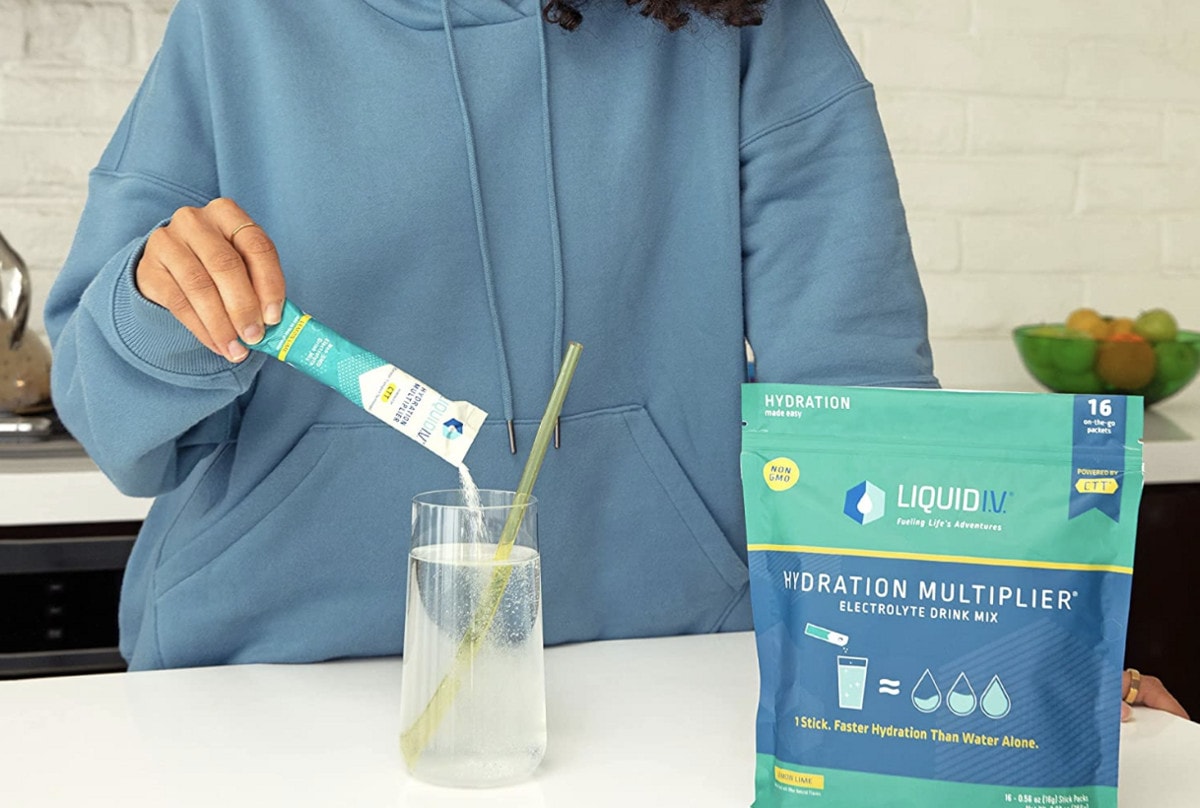
It’s no secret that we lose a lot of water sweating in the summer heat. Being dehydrated is not only uncomfortable and dangerous, but it actually raises your body temperature. Be sure you drink plenty of water and stay hydrated. Room temperature water will hydrate you quicker than cold water, but really any will do.
Better yet, drink water with added electrolytes. Electrolytes help keep the water levels in your body balanced. They also help maintain pH levels and assist your body in absorbing nutrients!
While there are tons of great electrolyte drinks on the market like gatorade and hydration enhancers like the Liquid IV Hydration Multipliers, you can also get electrolytes naturally by putting a pinch of sea salt in your water, drinking coconut water, or even eating watermelon!
8. Face Your Tent East

Since the sun rises in the east and sets in the west, facing your tent’s door east will keep the afternoon and evening sun setting behind you as opposed to beating into your door. Better yet, if you have a reflective sunshade you can place it on the south side of your tent. This will bounce the hot sun away from your tent.
9. Time Your Activities
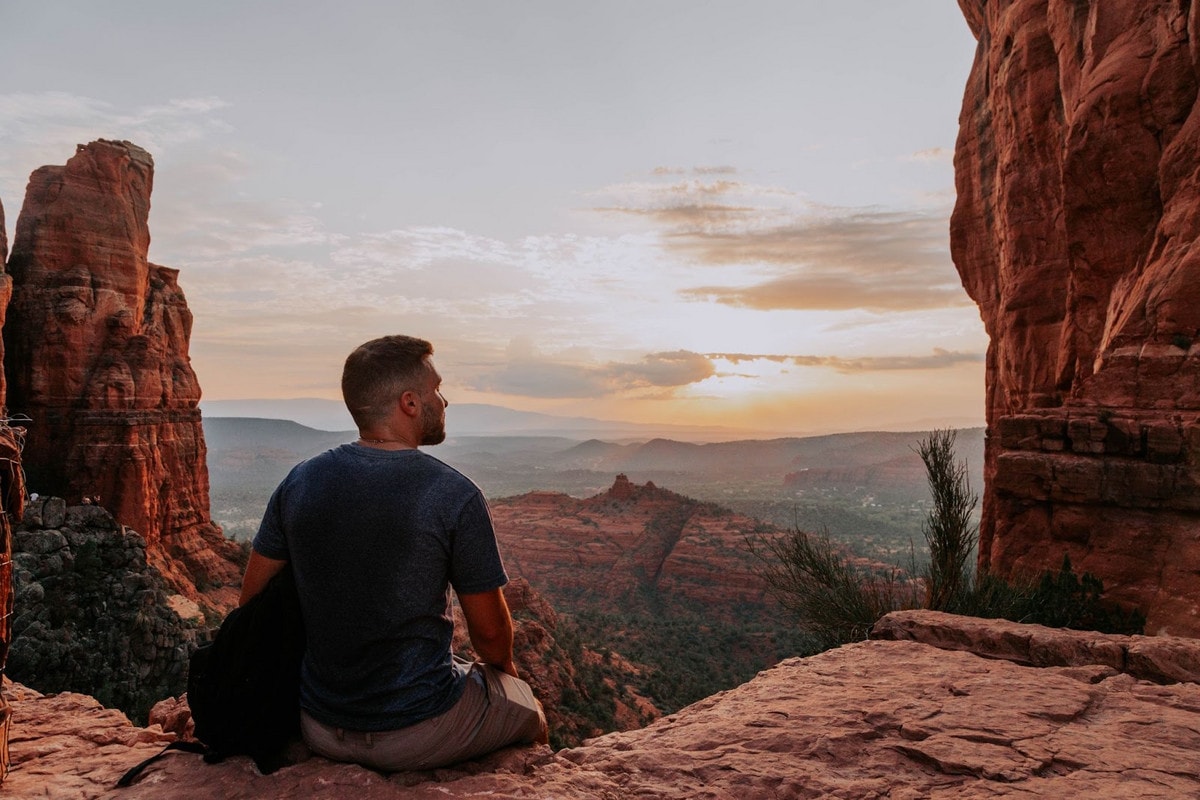
Keeping yourself cool during the summer means maintaining a low body temperature. The best way to stay cool camping is to keep your body temperature from getting too high in the first place. Plan to do any high intensity activities like running, biking, or hiking in the cooler morning sun or at sunset.
10. Choose Higher Elevation Destinations
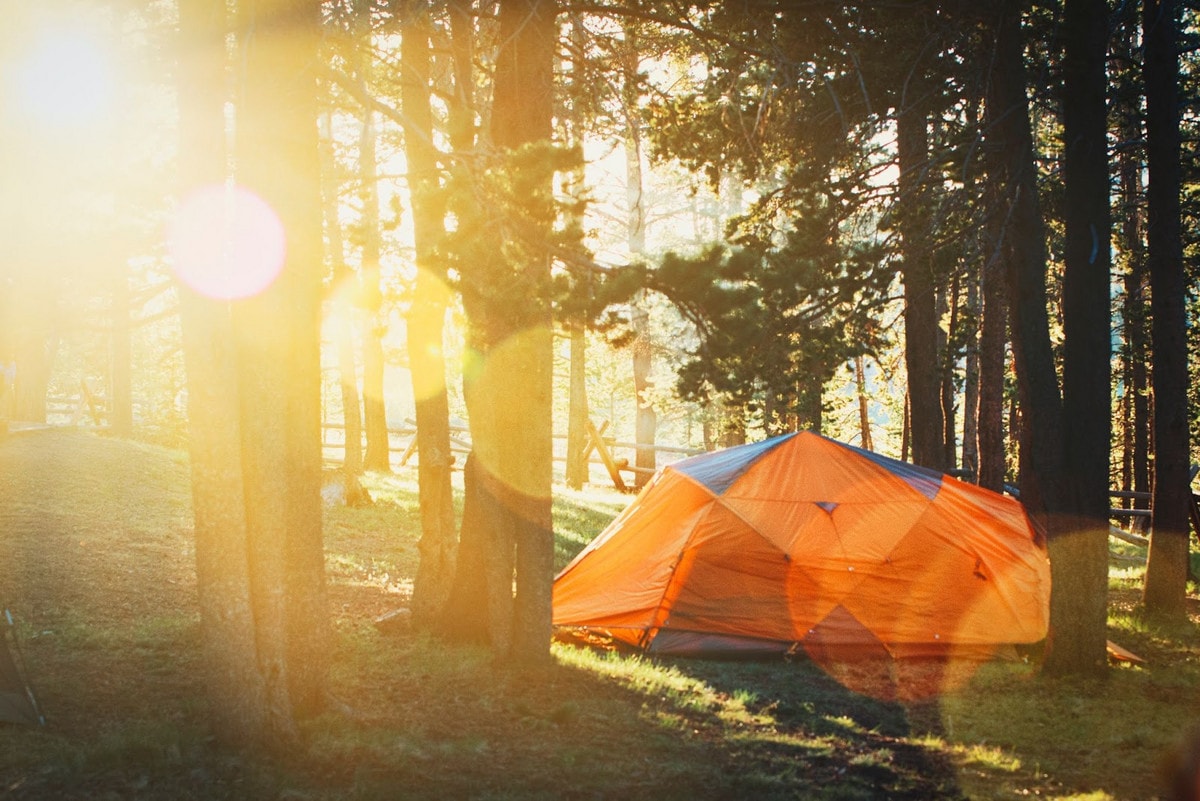
The higher you go in elevation, the cooler the air will most likely be. If you’re sensitive to the heat or traveling with kids or pets, you may want to travel to higher elevation destinations for the hottest summer months.
This isn’t always the case, especially if you live closer to the coast. Oftentimes the coastline will stay cooler than inland destinations. Just be sure to check the weather and choose your overlanding or car camping destinations carefully.
Related Reading: The Ultimate Guide to Camping With Dogs
11. Use Wet Towels
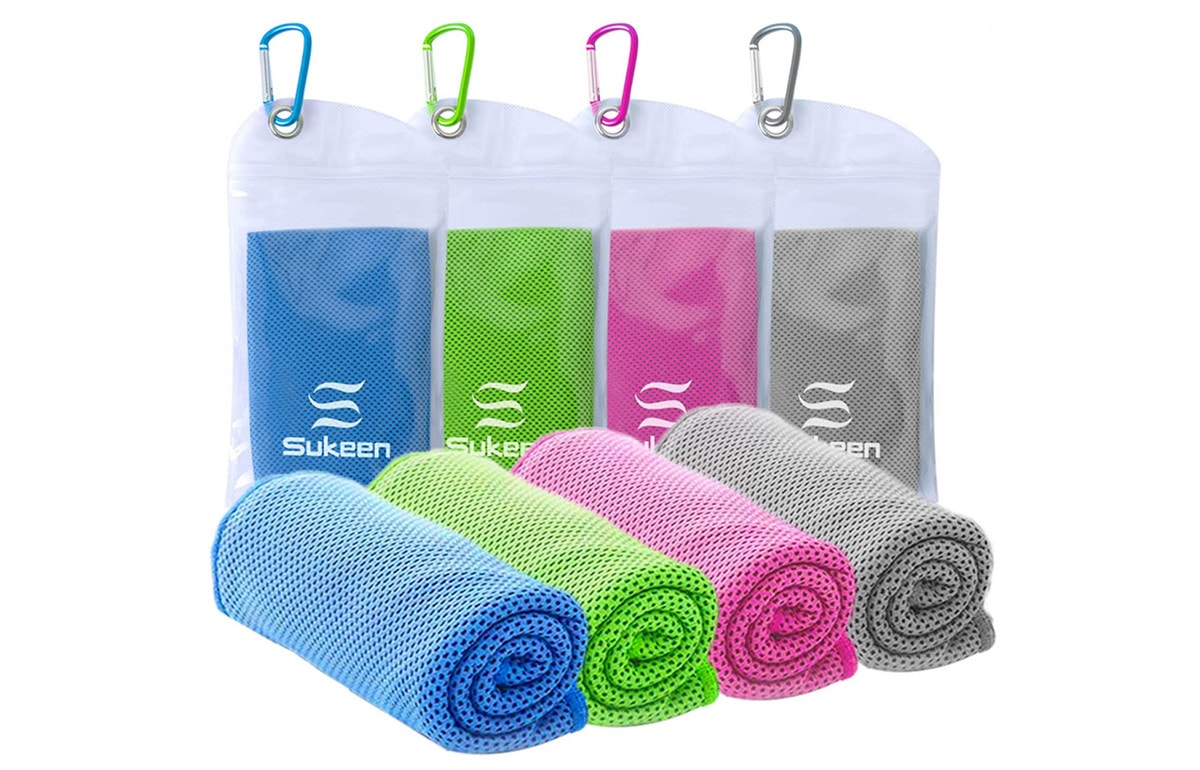
Humans sweat because our bodies use evaporative cooling to regulate our temperature. As the beads of sweat start to gather on our skin, the atmosphere turns the moisture into vapor and it evaporates. This ultimately cools us down!
Placing wet towels or rags on your body will super charge this effect and cause your body temperature to lower without needing to sweat as much. A regular towel will suffice, but if you’re looking for some serious cooling, consider purchasing a cooling towel. These are specially designed to stay cool for hours, and all you need to do is get them wet and ring them out.
12. Utilize Frozen Water Bottles
If you’re heading out for a multi-day camping trip, freeze a few water bottles ahead of time. They are great to place in your sleeping bag on a hot night to cool you down. Also, once they’re mostly melted you can drink them and enjoy the cool water.
If you’ve heard that it’s unsafe to drink from disposable plastic water bottles that have been frozen, we’re happy to inform you that this is just a myth. Cold actually helps slow the release of toxic chemicals from plastics.
13. Maximize Your Cooler Ice
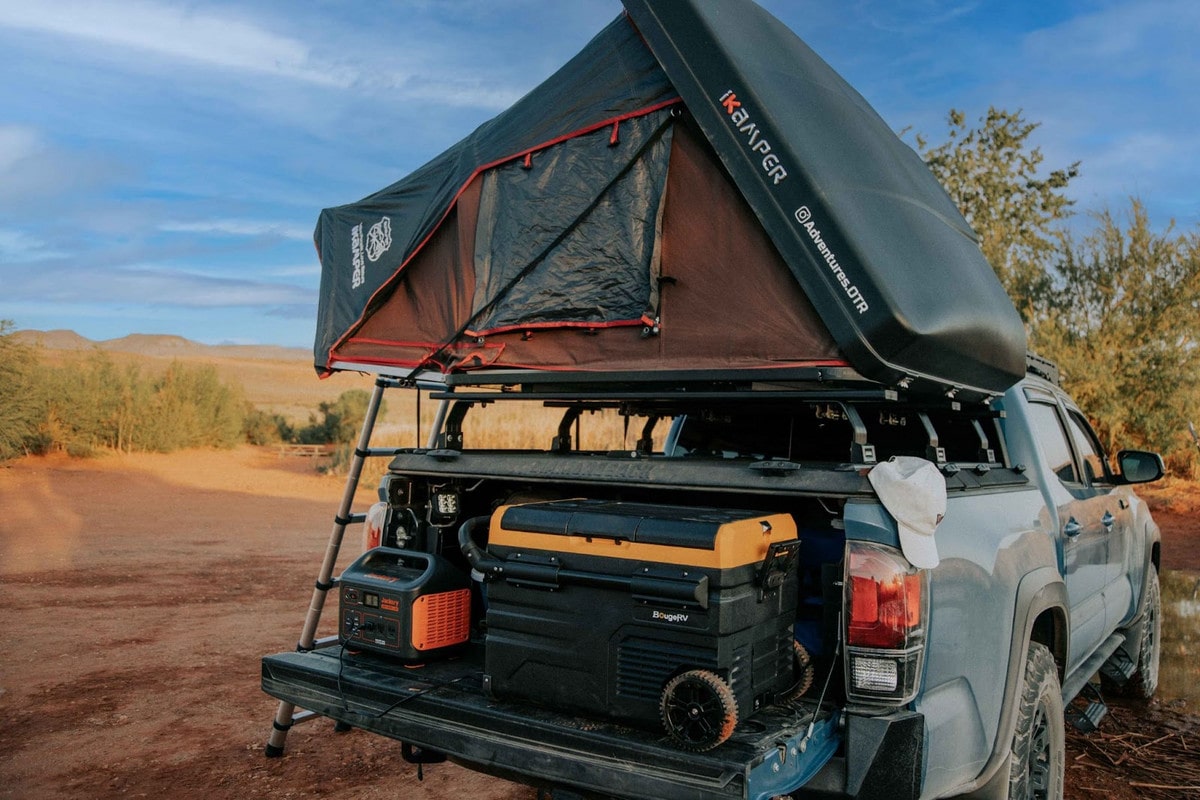
If you’re bringing a cooler for your outdoor adventure, you can use the ice for more than just keeping your food cold. You can always make an ice pack to place on your forehead, hands, back, and feet. These areas on your body are the best places to cool to lower your overall body temperature.
Always be sure you’re using a barrier between your skin and ice though. Fill your bag with a bit of water to diffuse the cold, or use a washcloth or paper towel to prevent damaging your skin.
Frequently Asked Questions
Here are some of the most common questions about staying cool on your summer camping trip.
What temperature is too hot for camping?
The National Weather Service (NWS) states that any temperature between 90-105 degrees should require extreme caution. This means you may want to rethink your camping trip—especially if you’re traveling with kids or pets.
Can you camp in 100 degree weather?
Technically yes, but extreme caution and care should be taken to stay cool.
Will a fan keep a tent cool?
A fan alone will not necessarily keep you cool enough to be comfortable tent camping during extreme weather. Pair this with other methods of staying cool like using a cooling towel and opening windows to allow the air to circulate.
How do you air condition a tent without electricity?
The best way to cool a hot tent without electricity is to open windows to let the air circulate. Use a spray bottle filled with water or damp towels on your skin; this will allow your body to naturally cool through evaporation.



